“Weird business ideas that made millions” – ever think that could be true?
It sure is!
In the world of starting your own business, sometimes the strangest ideas are the ones that make people rich.
And guess what?
We’re about to take a fun journey into the world of these odd, but super successful, businesses.
Get ready to be amazed!
From pet rocks to selling pixels on a website, these are real stories of people who turned their quirky ideas into million-dollar ventures.

So, let’s buckle up and explore these eleven fascinating tales of creativity, risk-taking, and, of course, a bit of weirdness that led to surprising success!
The Pet Rock: A Simple Idea That Rocked the Market
Ever thought a rock could make you millions?
It’s almost as crazy as people who are making millions filming TikToks…
If there’s one thing for sure, it’s that making millions is more of a skillset than anything, but we can talk about that some other time.
Let’s go back to the 1970s and meet the Pet Rock, one of those weird business ideas that made millions, a simple idea that created a millionaire overnight.
- Creator: Gary Dahl, an advertising executive, created “The Pet Rock” as a joke about pet ownership hassles.
- The Product: Smooth Mexican beach stones, packaged in custom boxes with straw bedding and a humorous manual.
- Marketing Genius: The novelty of a “no-care-needed” pet and clever, funny packaging made it a perfect gag gift.
- Instant Hit: Launched in 1975, the Pet Rock became a sensation, selling for $4 each, a significant amount at the time.
- Cultural Phenomenon: By Christmas 1975, Gary Dahl was a millionaire. The Pet Rock was being talked about everywhere.
- Lesson Learned: The Pet Rock shows us that simple ideas, with creativity and smart marketing, can lead to amazing success.
Want to know more about Gary Dahl and his Pet Rock idea?
Check out this 👉 article to read more about Gary’s story.

Million Dollar Homepage: Pixel Power
Ever thought a tiny pixel could be worth a dollar?
Welcome to the story of the Million Dollar Homepage, one of those weird business ideas that made millions.
It’s a brilliant blend of simplicity and ingenuity in the digital age, proving that sometimes the most unconventional concepts can lead to incredible success.
The Birth of a Million-Dollar Idea
In 2005, a university student named Alex Tew came up with a groundbreaking idea to pay for his education.
If you weren’t already aware, Alex Tew is the co-founder of Calm. (The meditation app)
Anyways, he created a website called the Million Dollar Homepage, where each pixel on a 1000×1000 grid was sold for $1.
The concept was simple: buy a pixel to advertise whatever you want.
- Initial Doubts: Like many unique ideas, it faced skepticism. Could selling pixels really work?
- Website Launch: Despite doubts, Tew launched the site and the idea quickly caught on.
Marketing Genius
Tew’s marketing strategy was as simple as his idea.
He relied on the novelty of the concept and the buzz it generated in media and online forums.
- Word of Mouth: News about the website spread quickly, attracting the attention of advertisers and the curious alike.
- Media Coverage: The project gained momentum as it was featured in major news outlets, further increasing its popularity.
Rising Popularity and Challenges
The site’s popularity skyrocketed, but it wasn’t without challenges.
Tew had to ensure the site stayed up amid increasing traffic and manage the growing interest from advertisers and the media.
- Technical Hurdles: Managing heavy web traffic and keeping the site functional was a constant challenge.
- High Demand: The demand for pixels was overwhelming, with advertisers from small businesses to large corporations vying for space.

The Final Pixel and Its Legacy
In January 2006, Tew sold the last of the million pixels, reaching his goal. The final pixel was auctioned for a significantly higher amount, bringing the total to over a million dollars.
- Last Pixel Auction: The final pixel was sold for over $38,000, far exceeding its original price.
- Total Earnings: Tew earned over $1 million, a sum that far exceeded his initial goal of funding his university education.
Impact and Influence
The Million Dollar Homepage not only funded Tew’s education but also left a lasting impact on online advertising and creative fundraising.
- Online Advertising: The project showcased the potential of online advertising in a novel way.
- Inspiration for Entrepreneurs: Tew’s success inspired countless entrepreneurs to think outside the box and explore unique online business models.
Lessons Learned from the Million Dollar Homepage
The story of the Million Dollar Homepage offers valuable lessons for anyone looking to make a mark in the digital world.
- Simple Ideas Work: Sometimes, the simplest ideas can be the most effective.
- The Power of Novelty: A unique concept can capture global attention and open new possibilities.
- Media Attention is Crucial: Effective use of media and publicity can propel an idea to success.
Curious about the Million Dollar Homepage and its lasting influence?
Check out this 👉 article from DevX.
The Million Dollar Homepage was more than just a website, it’s a testament to the power of a simple, creative idea and its potential to create waves in the digital world.
It reminds us that in the age of the internet, sometimes all it takes is one small pixel to make a big impact.

I Can Has Cheezburger: Laughing All the Way to the Bank
Who knew that funny cat pictures could be not just entertaining but also incredibly lucrative?
This is the story of “I Can Has Cheezburger,” one of those weird business ideas that made millions.
It’s a tale about how a website turned viral cat memes into a multimillion-dollar business, captivating the world with humor and simplicity.
The Beginning: A Simple Humorous Blog
It all started in 2007 when Eric Nakagawa and Kari Unebasami launched a blog to share funny images of cats with captions.
The concept was straightforward but struck a chord with internet users.
- Simple Idea: The website featured user-submitted photos of cats with humorous, misspelled captions.
- Instant Hit: The quirky humor quickly garnered a massive following, becoming an internet sensation.
Viral Success and Expansion
The popularity of “I Can Has Cheezburger” skyrocketed, leading to significant expansion.
- Building a Brand: The website became more than just a cat meme blog; it evolved into a recognizable brand.
- Expanding Content: The site began featuring other animals and various humorous themes, broadening its appeal.
Acquisition and Growth
In 2007, just a few months after its inception, “I Can Has Cheezburger” was acquired by Ben Huh, who saw the potential for even greater growth.
- Acquisition Deal: Huh bought the site for $2 million, a move that surprised many but proved to be visionary.
- Expansion Strategies: Under Huh’s leadership, the site expanded its content and reach, becoming a cornerstone of Internet culture.
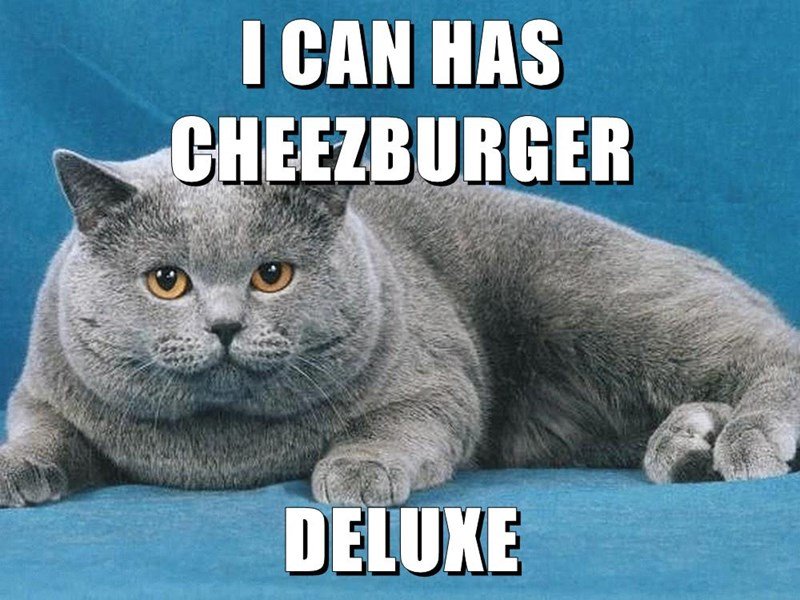
Impact on Internet Culture
“I Can Has Cheezburger” didn’t just amass a huge following; it influenced the way people interacted with and shared content online.
- Internet Memes: The site played a significant role in popularizing the concept of internet memes, especially animal memes.
- Community Engagement: It fostered a community where users actively participated by submitting content and sharing memes.
Monetization and Business Success
The site’s immense popularity was not just a cultural success but also a financial one.
- Advertising Revenue: With millions of page views, the site generated significant revenue from advertising.
- Merchandising: The brand extended to merchandise, further increasing its revenue streams.
Lessons from Cheezburger’s Success
The story of “I Can Has Cheezburger” offers insightful lessons for digital entrepreneurs and content creators.
- Power of Humor: It demonstrates how humor can be a powerful tool for engagement and building a loyal audience.
- Community Involvement: Encouraging user participation and content submission can significantly enhance a website’s appeal and growth.
- Adaptability: The site’s ability to evolve and expand its content was key to sustaining interest and relevance.
Curious to know more about the journey of “I Can Has Cheezburger” and its impact on internet culture?
Check out this detailed 👉 New York Times article.
More Than Just Cat Memes…
“I Can Has Cheezburger” is a perfect example of how simple, humorous ideas can transform into weird business ideas that made millions.
It demonstrates how a small blog about cat memes evolved into a cultural and financial powerhouse, redefining our approach to content, humor, and community in the digital era.
This story is a remarkable illustration of the unexpected ways success can manifest in the Internet age.
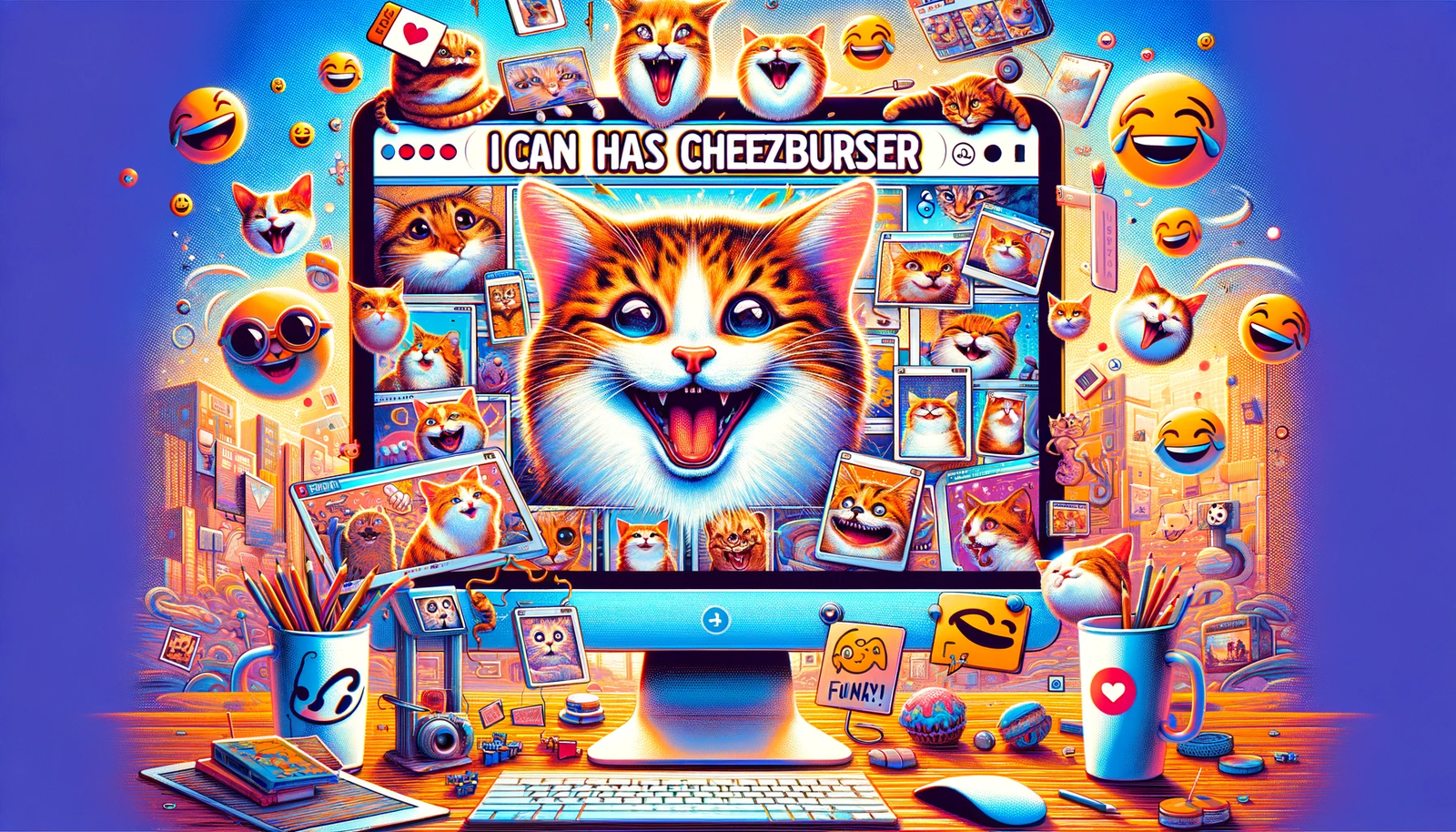
Santa Mail: Delivering Christmas Wishes
Imagine turning children’s letters to Santa into a heartwarming and profitable venture.
That’s exactly what Santa Mail did, becoming one of those weird business ideas that made millions.
The Concept: Answering Santa’s Mail
Founded by Byron Reese in 2001, Santa Mail offered a unique service: sending personalized replies from Santa to children who wrote to him.

The charm of this idea lay in its simplicity and the joy it brought to kids during the holiday season.
- Innovative Idea: Parents could order a personalized letter from Santa for their child, complete with a North Pole postmark.
- Emotional Appeal: The service tapped into the magic of Christmas, making it a hit among families.
Marketing and Growth
Santa Mail’s success was driven by effective marketing strategies and its ability to connect emotionally with its audience.
- Word of Mouth: Positive customer experiences led to strong word-of-mouth marketing.
- Media Coverage: The unique service caught the attention of the media, further boosting its popularity.
Challenges and Overcoming Them
As with any business, Santa Mail faced its own set of challenges, especially around scaling up during the busy holiday season.
- Scaling Up: Managing the increased volume of letters during Christmas required efficient systems and processes.
- Consistency in Quality: Ensuring each letter maintained a high standard of personalization and quality was crucial.
Revenue and Business Success
The appeal of Santa Mail wasn’t just sentimental; it also translated into significant financial success.
- Profitable Model: With a low cost for each letter and a high emotional value, the business model was extremely profitable.
- Expanding Reach: Over the years, Santa Mail has sent out hundreds of thousands of letters, generating substantial revenue.
Impact on the Holiday Spirit
More than just a business, Santa Mail contributed to the holiday spirit, bringing joy and excitement to children and families.
- Spreading Joy: The service became a beloved part of many families’ holiday traditions.
- Inspiring Others: Santa Mail inspired similar services and initiatives, spreading the concept globally.
Lessons from Santa Mail’s Success
The story of Santa Mail provides valuable insights for those looking to start their own unique venture.
- Emotional Connection: A business that connects emotionally with its customers can have a profound impact.
- Simple Yet Unique: Sometimes, the most straightforward ideas are the most effective, especially when they fill a niche.
- Seasonal Business Model: Capitalizing on seasonal trends can be a highly effective business strategy.
Interested in learning more about Santa Mail and its heartwarming journey?
Check out this article from 👉 BusinessIdeasLab.
The Magic of Santa Mail
Santa Mail stands out as a shining example of how a simple, heartfelt idea can turn into one of those weird business ideas that made millions.
It highlights the power of bringing joy and wonder to children, proving that sometimes, the magic of a good deed can also be a lucrative business venture.

Potato Parcel: Spuddy Success
Who would have thought sending messages on a potato could be a business goldmine?
Welcome to the quirky world of Potato Parcel, a unique example of weird business ideas that made millions.
The Unusual Idea: Messages on Potatoes
Launched in 2015, Potato Parcel allowed customers to send a potato with a personalized message written on it.
Don’t believe me? You can buy them on Amazon for a cool $19.99.

This novel concept quickly captured the internet’s attention for its sheer absurdity and originality.
- Unique Concept: A service to send custom messages on potatoes, offering a bizarre yet memorable way of communication.
- Viral Sensation: The idea went viral, appealing to those looking for a fun and unconventional gift option.
Marketing and Popularity
Potato Parcel’s success was fueled by its clever marketing strategies and the novelty of its product.
- Social Media Buzz: The concept quickly gained popularity on social media, drawing in a wide audience.
- Media Features: Featured on various media platforms, it gained further traction among people seeking unique gift ideas.
Expansion and Diversification
As the popularity of Potato Parcel grew, the company expanded its offerings to include other quirky potato-based products.
- New Products: Alongside the original message potatoes, they introduced potato postcards, potato pals, and more.
- Wider Reach: The expansion helped the brand reach a broader audience, catering to various tastes and preferences.
Business Model and Revenue
Despite its unusual concept, Potato Parcel proved to be a financially successful business.
- Profitable Approach: With low production costs and high novelty value, the business model was both simple and effective.
- Steady Sales: Consistent demand for the product ensured a steady stream of revenue.
The Impact of Potato Parcel
Potato Parcel didn’t just make people laugh; it also had a notable impact on the market for novelty gifts.
- Novelty Market Growth: It opened up new avenues in the novelty gift market, inspiring similar unconventional ideas.
- Marketing Innovation: The brand’s success highlighted the importance of unique marketing in the digital age.

Lessons from Potato Parcel’s Success
Potato Parcel’s journey offers valuable insights into the world of unconventional business ideas.
- Uniqueness Pays Off: Standing out in the market with a novel idea can be incredibly rewarding.
- Embracing Absurdity: Sometimes, embracing the absurd can capture the public’s imagination more than conventional approaches.
- Effective Online Marketing: Leveraging social media and online platforms is crucial for promoting unique products.
Interested in the quirky success story of Potato Parcel?
Check out this 👉 Forbes article for an in-depth exploration of this unique business.
The Power of a Potato
Potato Parcel is a prime example of how weird business ideas that made millions can stem from the most unexpected places.
It’s a story of how a simple potato, combined with creativity and effective marketing, can turn into a successful and profitable venture, changing the landscape of novelty gifting.
Hangover Helpers: Cleaning Up After the Party
Ever thought the aftermath of a party could be a profitable business niche?
Hangover Helpers turned this idea into one of those weird business ideas that made millions, offering a unique service for post-party cleanups.
Thinking back to my college days, this definitely would have come in handy.
The Concept: Post-Party Cleaning Service
Started by college students, Hangover Helpers provides a cleaning service for people after they’ve hosted a party.
They not only clean the mess but also prepare breakfast for the host and guests.
Think of how many college students this service actually has a use for… Maybe ALL OF THEM? 🤣

- Unique Service: A solution for party-goers who want to avoid the hassle of cleaning up after a night of fun.
- Added Value: The inclusion of a breakfast service adds an appealing twist, making it more than just a cleaning service.
Marketing and Expansion
Hangover Helpers gained popularity through smart marketing and understanding their target audience.
- Word of Mouth: Positive experiences led to strong word-of-mouth recommendations among college students and party hosts.
- Targeted Marketing: Focusing on college towns and areas with a vibrant nightlife proved to be an effective strategy.
Business Model and Revenue
The business model of Hangover Helpers is straightforward yet effective, focusing on a specific need in the market.
- Service Charge: Customers are charged a flat fee for cleaning and breakfast services, ensuring predictable revenue.
- Scalability: The concept has potential for expansion into new markets, increasing its profitability.
Challenges and Solutions
Like any business, Hangover Helpers faced its share of challenges, particularly in scaling and maintaining service quality.

- Maintaining Standards: Ensuring consistent high-quality service as the business grows is a key focus.
- Managing Demand: Balancing the high demand, especially during festive seasons, requires effective planning and resource management.
Impact on the Market
Hangover Helpers has not only made life easier for party hosts but also influenced the market for specialized cleaning services.
- Market Influence: Their success has paved the way for similar niche cleaning services.
- Innovation in Service: They’ve set a new standard for what a cleaning service can offer, combining utility with unique value adds.
Lessons from Hangover Helpers’ Success
The story of Hangover Helpers offers key insights into tapping into niche markets with creative solutions.
- Finding a Niche: Identifying and fulfilling a specific need can lead to substantial success.
- Adding Value: Offering additional services like breakfast adds value and sets the business apart from competitors.
- Understanding Your Audience: Knowing and catering to the specific needs of your target audience is crucial.
For more details on how Hangover Helpers turned post-party messes into a thriving business, take a look at this 👉 Entrepreneur article.
Cleaning Up in Business
Hangover Helpers stands as a brilliant example of weird business ideas that made millions.
It shows how an unconventional approach to a common problem – the dreaded post-party cleanup – can lead to a successful and innovative business venture, reshaping expectations in the service industry.

Raven’s Brew Coffee: Waking Dead Blend
Imagine a coffee so strong it wakes the dead!
Raven’s Brew Coffee did just that with their ‘Waking Dead Blend’, turning it into one of those weird business ideas that made millions.

The Concept: Bold Coffee for the Bold Consumer
Based in Alaska, Raven’s Brew Coffee created a unique blend known for its high caffeine content and distinct flavor, targeting a niche market of coffee enthusiasts.
- Unique Selling Point: The ‘Waking Dead Blend’ offers a coffee experience that promises to awaken even the most tired souls with its strength.
- Brand Identity: Raven’s Brew established a strong brand identity with quirky, macabre-themed packaging that stood out on the shelves.
Marketing and Growth
Through clever marketing and an understanding of its customer base, Raven’s Brew Coffee expanded rapidly.
- Cult Following: The unique blend quickly developed a cult following, with customers who swore by its wake-up potency.
- Expanding Reach: Starting from a small local market, Raven’s Brew has spread its wings across the nation and beyond.
Challenges and Overcoming Them
Entering a market as competitive as the coffee industry is no easy task, but Raven’s Brew Coffee has managed to stand out with its unique approach.
- Standing Out: In the crowded coffee market, the distinctive flavor and branding of the ‘Waking Dead Blend’ carved out a unique space for Raven’s Brew.
- Quality Consistency: Maintaining the high quality and unique profile of their coffee as they scaled up was essential to their success.
Revenue and Business Model
Raven’s Brew Coffee’s business model is centered around providing a unique product that justifies a premium price.
- Premium Pricing: By offering a high-quality, niche product, Raven’s Brew can command a higher price point.
- Product Line Expansion: The company expanded its product line to include various blends, merchandise, and even coffee-related literature.
Impact on Coffee Culture
The ‘Waking Dead Blend’ from Raven’s Brew Coffee has not only captivated a loyal customer base but also impacted the wider coffee culture.
- Coffee Enthusiast Community: Their products have resonated with coffee lovers who seek out bold flavors and high caffeine content.
- Innovation in the Industry: Raven’s Brew has inspired other companies to push the boundaries of traditional coffee products.
Lessons from Raven’s Brew Coffee’s Success
The journey of Raven’s Brew Coffee and its ‘Waking Dead Blend’ offers several lessons for aspiring entrepreneurs.
- Brand Differentiation: A strong and distinctive brand can carve out a significant niche in a saturated market.
- Customer Loyalty: Offering a product that resonates deeply with a specific target audience fosters loyalty and word-of-mouth promotion.
- Product Quality: Consistently high-quality products encourage repeat business and customer advocacy.
For those interested in trying Raven’s Brew Coffee, you can order it easily from Amazon for around $29.
Brewing Success with Boldness
Raven’s Brew Coffee’s ‘Waking Dead Blend’ stands out as one of the weird business ideas that made millions. It exemplifies how boldness in product, branding, and business approach can lead to remarkable success, influencing trends and consumer expectations in the coffee industry.
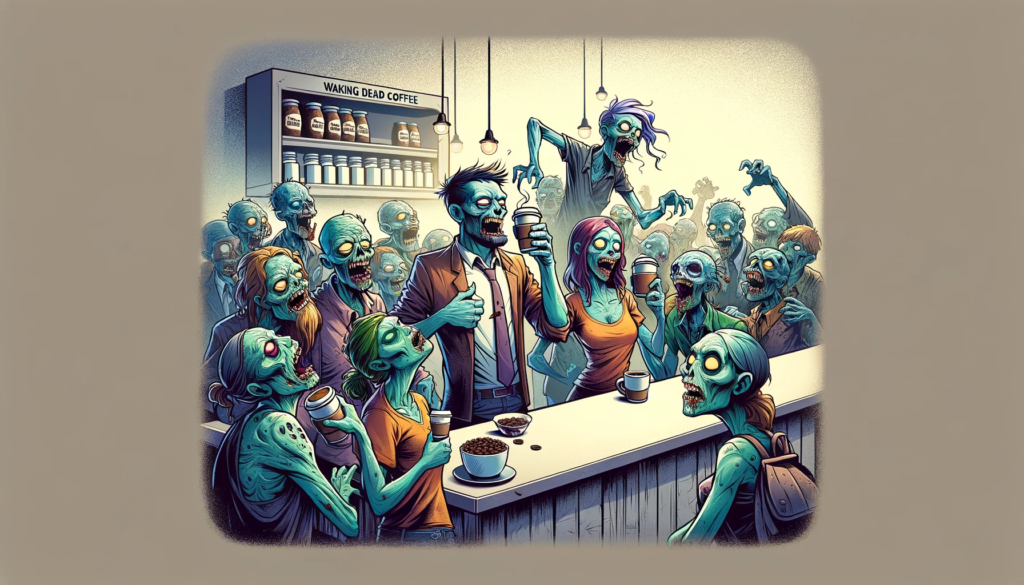
Billy Bob Teeth: A Smile Worth Millions
Who would have guessed that fake teeth could smile all the way to the bank?
Billy Bob Teeth turned a humorous gag into one of those weird business ideas that made millions, creating a global sensation with novelty dental prosthetics.
The Concept: Novelty Fake Teeth
Jonah White and Rich Bailey founded Billy Bob Teeth in 1994, sculpting exaggerated and humorous fake teeth to amuse friends.
Little did they know, it would lead to a multimillion-dollar business.
- Start of a Trend: The founders began selling their novelty teeth at a trade show, and they quickly became a hit.
- Brand Identity: With distinctive packaging and a memorable name, Billy Bob Teeth became instantly recognizable.
Marketing and Expansion
Capitalizing on their initial success, the company expanded its product line and marketed aggressively.
- Product Diversification: Billy Bob Teeth extended its range to include a variety of designs, tapping into different humorous themes.
- Global Reach: Their products found an audience worldwide, becoming popular in dozens of countries.
Challenges and Overcoming Them
Despite their quick rise to success, Billy Bob Teeth faced the challenge of staying relevant and expanding their market.
- Staying Fresh: To keep up with trends, they constantly innovated with new designs and product ideas.
- Competitive Edge: They maintained a competitive edge by ensuring high-quality products and excellent customer service.
Revenue and Business Model
The success of Billy Bob Teeth can be attributed to its smart business model and revenue strategies.
- Cost-effective Production: The company utilized efficient production methods to keep costs low and margins high.
- Wholesale and Retail: Selling both directly to consumers and through wholesalers helped diversify their revenue streams.
Impact on Pop Culture
Billy Bob Teeth didn’t just create a product; they created a cultural icon that resonated with people’s love for humor and playfulness.
- Pop Culture Phenomenon: The fake teeth became a staple in costumes, gags, and even in movies and television.
- Influence on Merchandise: Their success opened up the market for novelty merchandise in the dental and costume sectors.
Lessons from Billy Bob Teeth’s Success
The surprising success of Billy Bob Teeth provides several lessons for aspiring entrepreneurs about the power of humor in business.
- Leveraging Humor: Products that tap into a sense of fun and humor can create their own unique demand.
- Niche Marketing: Targeting a niche market effectively can lead to unexpected and substantial success.
- Brand Personality: A strong brand personality that resonates with consumers can help a product become iconic.
For a more detailed look at how Billy Bob Teeth became a million-dollar smile, check out this 👉 Inc. Magazine article.
Smiling to the Bank
Billy Bob Teeth is a shining example of weird business ideas that made millions, showing how a simple gag product can lead to a business empire.
It underscores the fact that with the right approach, even the most unconventional product can achieve global success and become a cultural phenomenon.

Decorating Cars, One Antenna at a Time
What if the simple car antenna could become a canvas for personality and humor?
That’s what Jason Wall did with his company, turning the humble antenna ball into one of those weird business ideas that made millions.

I’ve always wondered where those things came from…
The Concept: A Novel Car Accessory
Jason Wall’s company, founded in the late 1990s, started producing antenna balls – small, decorative balls that could be mounted on car antennas.
They featured various designs, from smiley faces to sports team logos.
- Simple Product: These antenna toppers were simple rubber or foam balls but with the added flair of customization.
- Wide Appeal: They appealed to a broad audience, allowing people to add a personal touch to their vehicles.
Marketing and Expansion
The antenna ball craze took off with strategic marketing and partnerships.
- Partnerships: Collaborations with major companies and sports teams helped the product reach a vast audience.
- Brand Recognition: The antenna balls became a way for drivers to express themselves, making the product a mobile advertisement.
Challenges and Overcoming Them
While the concept was straightforward, the road to success had its obstacles, from manufacturing challenges to market saturation.
- Manufacturing Scale: As demand grew, scaling up production while maintaining quality was a significant hurdle.
- Market Saturation: With popularity came competition, which meant constantly innovating to stay ahead.
Revenue and Business Model
The antenna balls were not just popular; they were profitable too, thanks to a business model that capitalized on low-cost production and high-volume sales.
- Cost-Effective Production: The simplicity of the product allowed for cheap manufacturing and a high profit margin.
- Mass Appeal: With a product appealing to such a wide demographic, sales were always on the upswing.
Impact on Pop Culture
The antenna balls became more than just a car accessory, they became a pop culture phenomenon.
- Pop Culture Icon: They were featured in movies, TV shows, and became synonymous with personal vehicle expression.
- Collectible Items: Many designs became collectible items, with enthusiasts seeking rare and unique balls to add to their collections.
Lessons from Antenna Balls’ Success
The story of antenna balls turning into a million-dollar idea provides several business insights.
- Niche Markets: Catering to a niche market with a simple, customizable product can lead to unexpected success.
- Branding and Identity: Products that allow consumers to express their identity can create a strong emotional connection and brand loyalty.
- Adaptability: The ability to adapt and expand product lines in response to trends is crucial for longevity.
For an in-depth look at how antenna balls became a symbol of personal expression on the road, refer to this comprehensive 👉 New York Times Business section.
From Antenna to Icon
The antenna ball is a testament to how weird business ideas that made millions can come from the most ordinary objects.
It’s a story about turning a simple concept into a widespread trend that captured the hearts of drivers everywhere, illustrating the power of innovation and marketing in transforming a product into a cultural icon.

Doggles: Goggles for Dogs
Did you know that dogs can have their own stylish and functional eyewear?
“Doggles” made this a reality, turning it into one of those weird business ideas that made millions, with a product as unique as it is practical.
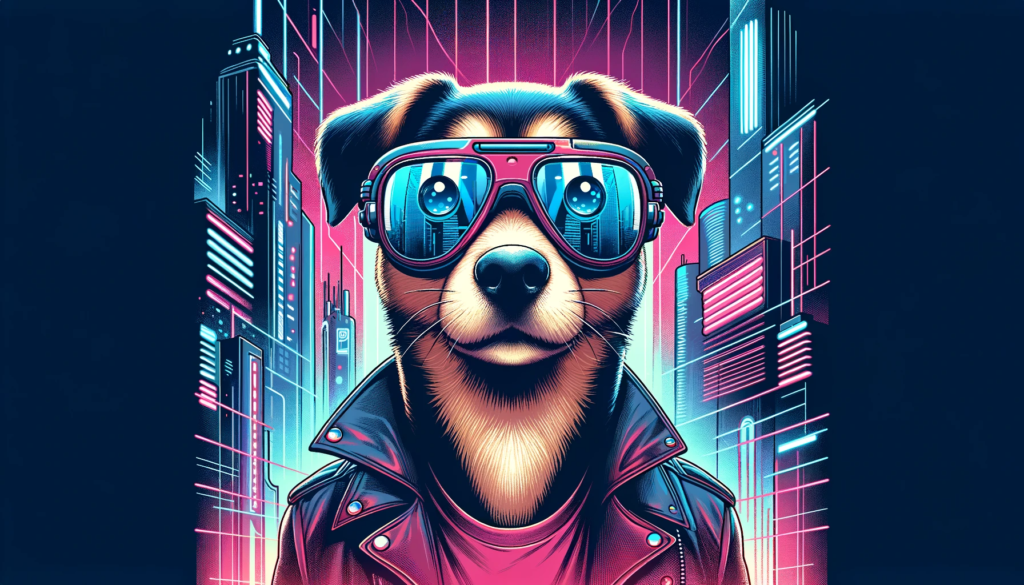
The Concept: Protective Eyewear for Dogs
Doggles started with a simple yet innovative idea: creating protective eyewear designed specifically for dogs.
This idea catered to pet owners who wanted to safeguard their dogs’ eyes from the sun, wind, and debris.
- Innovation in Pet Care: Doggles introduced a new category in pet accessories, combining fashion with functionality.
- Health Benefits: Besides being fashionable, Doggles provide real health benefits, protecting dogs’ eyes from harmful UV rays and other elements.
Marketing and Brand Development
Doggles didn’t just create a product; they built a brand that resonated with pet owners’ desire to provide the best for their pets.
- Brand Identity: Doggles established itself as a unique brand in the pet market, known for innovation and quality.
- Community Engagement: Engaging with the pet owner community and showcasing real pets using their product helped in building a loyal customer base.
Expansion and Product Diversity
Recognizing the potential of their idea, Doggles expanded their product range to cater to various needs and preferences of dog owners.
- Diverse Range: The company expanded its line to include different styles, sizes, and even prescription lenses for dogs.
- Global Reach: Doggles started reaching international markets, appealing to dog owners around the world.
Challenges and Business Strategy
Breaking into the pet accessory market with such a unique product came with its own set of challenges.
- Educating Consumers: One of the main challenges was educating the market about the benefits of Doggles for pets.
- Strategic Marketing: The company used creative marketing strategies to showcase the practicality and necessity of their product.
Impact on Pet Care and Fashion
Doggles not only became a functional accessory but also set a new trend in pet fashion and care.
- Trendsetting: Doggles became a trendsetter in pet fashion, inspiring other companies to innovate in pet accessories.
- Raising Awareness: The popularity of Doggles helped raise awareness about pet eye health and protection.
Lessons from Doggles’ Success
The story of Doggles offers several insights into creating a successful business from a unique idea.
- Identifying a Niche: Finding and addressing a specific need in the market can lead to significant success.
- Innovation and Practicality: Combining innovation with practical benefits can result in a product that appeals to both emotion and need.
- Brand Storytelling: Effective storytelling and building a strong brand narrative can connect with customers on a deeper level.
Curious about how Doggles revolutionized pet care and fashion?
Explore their journey more in this 👉 Forbes article.
Seeing the World Through Doggles
Doggles stands as a remarkable example of weird business ideas that made millions.
It highlights how an unusual concept, when executed well, can lead to a product that not only serves a practical purpose but also creates a new trend in the market, showcasing the potential of innovative thinking in the pet care industry.
Plus your furry best friend looks adorable in these things!

Lucky Break Wishbones: Synthetic Wish-Making
In a world where traditions meet innovation, “Lucky Break Wishbones” found a unique niche, making one of those weird business ideas that made millions.
This company created synthetic wishbones, bringing a twist to a classic tradition.
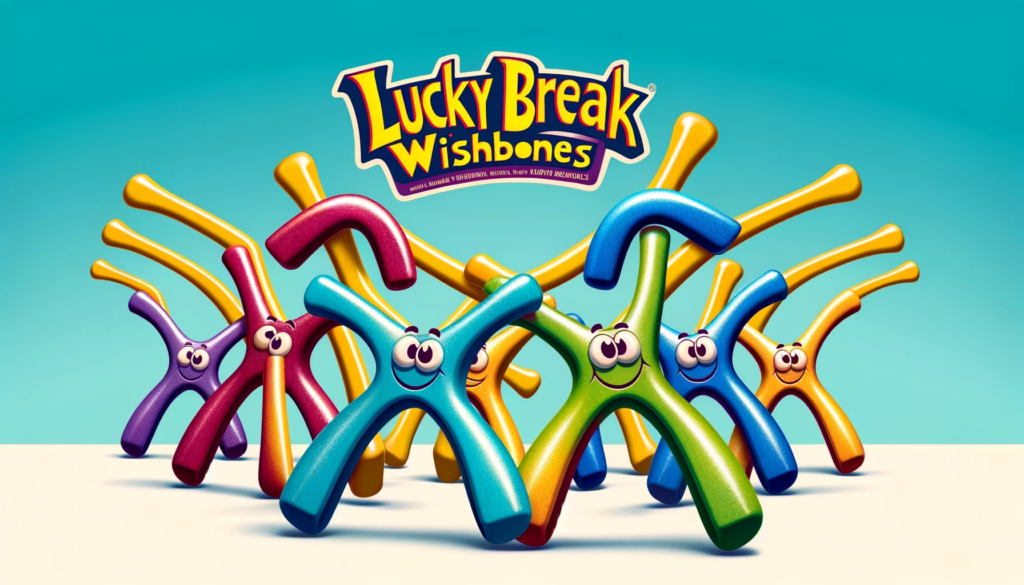
The Concept: A New Take on an Old Tradition
Founded by Ken Ahroni, Lucky Break Wishbones offers a solution to the age-old problem of only having one wishbone at a Thanksgiving dinner.
Their synthetic wishbones replicate the experience without the need for a turkey.
- Innovative Product: The synthetic wishbones are designed to mimic the feel and breakability of real wishbones.
- Inclusive Tradition: This product allows more people to participate in the wish-making tradition, especially during holidays.
Marketing and Growth
Lucky Break capitalized on a mix of novelty and tradition to market their unique product.
- Nostalgic Appeal: Tapping into the nostalgic value of wishbone breaking resonated with many customers.
- Word of Mouth: The novelty of the product spurred word-of-mouth marketing, boosting its popularity.
Challenges and Business Strategy
Introducing a synthetic version of a traditional item presented its own challenges, particularly in terms of market acceptance and manufacturing.
- Market Acceptance: Convincing consumers to embrace a synthetic alternative to a time-honored tradition required strategic marketing.
- Product Quality: Ensuring the synthetic wishbones provided a satisfying ‘snap’ was crucial for customer satisfaction.
Revenue and Business Success
Despite initial challenges, Lucky Break Wishbones found financial success through their unique offering.
- Unique Market Position: By creating a product that had no direct competitors, they carved out a new market niche.
- Seasonal Sales Spikes: Capitalizing on holiday seasons, particularly Thanksgiving, they maximized their sales potential.
Impact on Holiday Traditions
Lucky Break Wishbones didn’t just create a product; they added a new dimension to a beloved tradition, making it more accessible and inclusive.
- Reviving Tradition: They provided a way for more families to keep the wish-making tradition alive.
- Inclusive Celebrations: With synthetic wishbones, everyone at the dinner table could partake in the fun, regardless of the size of the gathering.
Lessons from Lucky Break Wishbones’ Success
The success of Lucky Break Wishbones offers valuable insights into how blending tradition with innovation can lead to a thriving business.
- Creative Problem-Solving: Identifying and addressing a common problem in a traditional practice can lead to a successful business idea.
- Emotional Connection: Products that connect with customers on an emotional level, especially through nostalgia and tradition, can have strong appeal.
- Seasonal Marketing: Leveraging seasonal trends and holidays can significantly boost product relevance and sales.
Interested in the story of how synthetic wishbones became a hit? Dive deeper with this 👉 PYMNTS article discussing the journey of Lucky Break Wishbones.
Reinventing Tradition for Success
Lucky Break Wishbones stands as a prime example of weird business ideas that made millions.
It shows how a creative twist on a longstanding tradition can capture the public’s imagination and open up new avenues for business, proving that innovation and respect for tradition can go hand in hand.

When Weird Ideas Win Big
What a ride we’ve had exploring these super cool stories!
It’s like finding hidden treasures in the most unexpected places.
Each of these businesses, from rocks that became pets to folks helping clean up after parties, proves that ‘weird business ideas that made millions’ is not just a saying – it’s real!
These businesses might have started with funny or strange ideas, but they all had something special: they really knew what people liked and wanted.
Like making wishbones when there’s no turkey, or making cool glasses for dogs – they found fun ways to solve small problems or add a bit of joy to our lives.
These stories are not just about making money. They show us that thinking differently and having fun with ideas can lead to awesome things.
They tell us that if you see the world in your own unique way, you might come up with the next big idea.
Maybe, somewhere in your imagination, you’ve got a weird but wonderful idea that could be a hit!
So, if you’re dreaming of starting your own business or you just love wild and wacky stories, remember this: sometimes the weirdest ideas are the best.
You never know, your crazy idea might be the next big hit!







